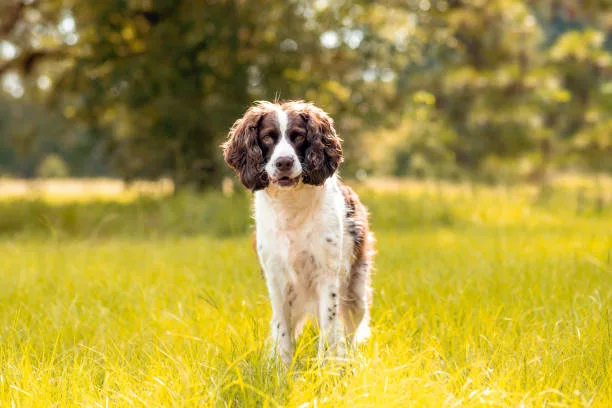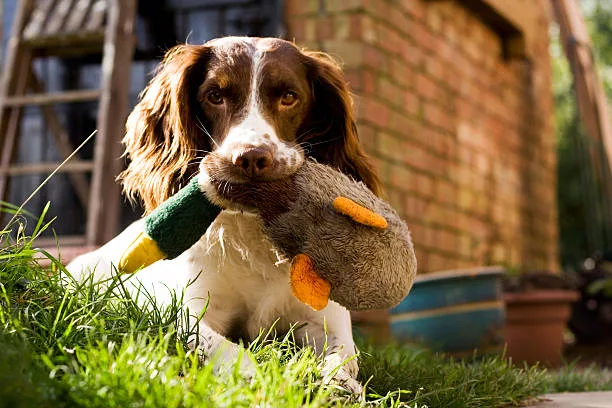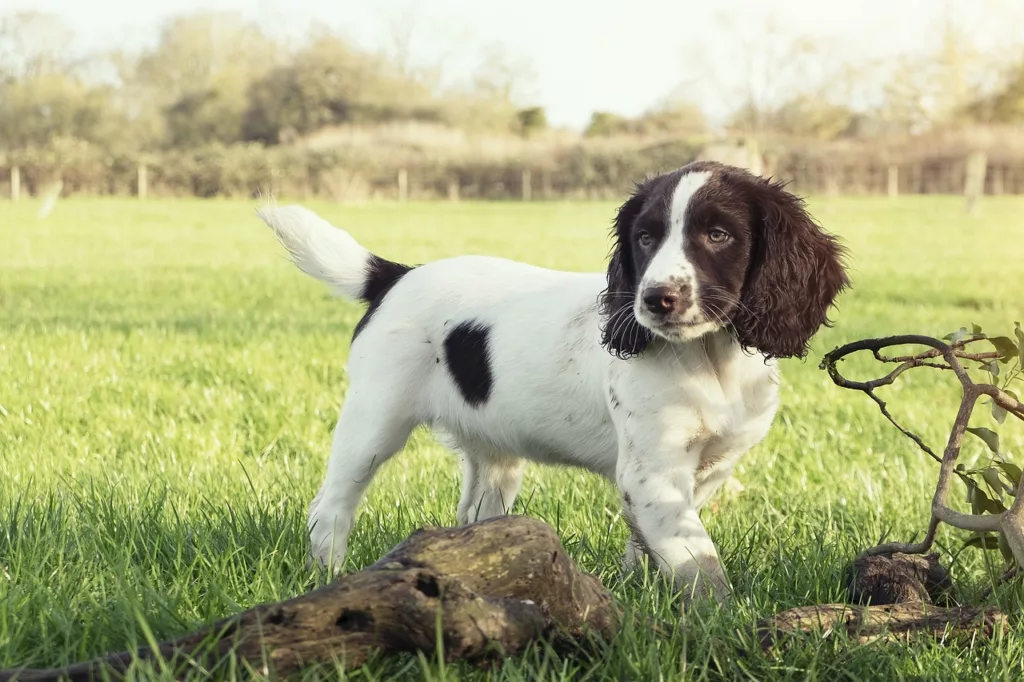English Springer Spaniels are one of the most popular dog breeds in the world, and for good reason. They are intelligent, playful, and loving companions that make great family pets. If you are considering getting an English Springer Spaniel, this guide will provide you with everything you need to know about the breed, from its history and temperament to its care and training.
History
The English Springer Spaniel is a descendant of the Old English Spaniel, a type of gundog that was used to flush out birds in the 16th century. The breed was developed in England in the 19th century and was first recognized by the Kennel Club in 1884. English Springer Spaniels were originally used as hunting dogs, but they quickly became popular as family pets.

Ancestry
English Springer Spaniels have a long and rich history, dating back to the 16th century. They were bred to be versatile hunting dogs, capable of flushing out game birds and retrieving them on land or water. Their ancestors, the Old English Spaniels, were also used for falconry and as companion dogs for the aristocracy.
Over time, the breed evolved into two distinct types: the Norfolk Spaniel and the Shropshire Spaniel. The Norfolk Spaniel was smaller and had a shorter coat, while the Shropshire Spaniel was larger and had a longer coat. In the mid-1800s, these two types were crossed to create the modern English Springer Spaniel we know today.
Popularity
English Springer Spaniels quickly gained popularity as family pets due to their friendly and affectionate nature. They were also highly valued as hunting dogs, known for their ability to work tirelessly in the field. In fact, the breed’s name comes from their method of flushing game birds, where they would “spring” or jump into the air to startle the birds into flight.
Today, English Springer Spaniels are still popular as both family pets and hunting companions. They are also commonly used in search and rescue operations and as therapy dogs due to their gentle and loving nature.
Temperament
English Springer Spaniels are known for their gentle and playful nature. They are intelligent and eager to please, which makes them easy to train. They are also very social dogs and love to be around people. English Springer Spaniels are generally good with children and other pets.

Personality
English Springer Spaniels have a happy-go-lucky personality that makes them a joy to be around. They are always ready for an adventure and love to play and explore. They are also very affectionate and make great lap dogs, often curling up next to their owners for a cuddle.
This breed is also known for their intelligence and eagerness to learn. They excel in obedience training and can also be trained for various dog sports such as agility and tracking. However, it’s important to keep them mentally stimulated as they can become bored easily if not given enough mental and physical exercise.
Socialization
As social dogs, English Springer Spaniels thrive on human interaction and can suffer from separation anxiety if left alone for long periods of time. It’s important to socialize them from a young age to ensure they are comfortable around different people, animals, and environments. This will also help prevent any potential behavioral issues such as excessive barking or aggression towards other dogs.
Care
English Springer Spaniels are relatively low-maintenance dogs. They need to be brushed regularly to prevent mats and tangles, but they do not require frequent baths unless they get particularly dirty. Their ears should be checked and cleaned regularly to prevent ear infections, as they have long, floppy ears that can trap moisture and bacteria.

Grooming
The English Springer Spaniel has a medium-length, double coat that is weather-resistant. They shed moderately throughout the year, with heavier shedding during seasonal changes. Regular brushing will help keep their coat healthy and reduce shedding. They also require occasional trimming of their feathered legs, ears, and tail to maintain their appearance.
It’s important to note that English Springer Spaniels are prone to ear infections due to their long, floppy ears. It’s recommended to check and clean their ears once a week to prevent any buildup of wax or debris. It’s also important to dry their ears thoroughly after swimming or bathing to avoid any moisture getting trapped inside.
Exercise
English Springer Spaniels are an active breed and require daily exercise to keep them physically and mentally stimulated. A minimum of 30 minutes of moderate to vigorous exercise per day is recommended, such as brisk walks, runs, or playing fetch. They also enjoy activities like hiking, swimming, and agility training.
Without enough exercise, English Springer Spaniels can become bored and develop destructive behaviors such as chewing or digging. They also have a tendency to gain weight if not given enough exercise, so it’s important to monitor their food intake and provide them with regular opportunities to burn off excess energy.
Training
As mentioned earlier, English Springer Spaniels are intelligent and eager to please, making them relatively easy to train. However, they do have a stubborn streak and may try to test their boundaries, so consistent and patient training is key.

Basic Commands
Basic obedience training should start from a young age to establish good behavior habits and build a strong bond between you and your dog. Some basic commands to teach your English Springer Spaniel include:
- Sit: This command teaches your dog to sit on command, which can be useful in many situations, such as when greeting guests or before crossing the street.
- Stay: This command teaches your dog to stay in one place until released. It’s important for their safety and can also be useful when you need them to stay put while you attend to something else.
- Come: This command teaches your dog to come to you when called. It’s essential for their safety, especially when they are off-leash in an open area.
- Leave it: This command teaches your dog to leave something alone, whether it’s a toy, food, or something potentially dangerous.
Socialization
Socialization is also an important aspect of training for English Springer Spaniels. As mentioned earlier, they are social dogs and need to be exposed to different people, animals, and environments from a young age to ensure they are comfortable and well-behaved in all situations.
It’s recommended to start socializing your English Springer Spaniel as soon as possible, ideally between 3 and 12 weeks of age. This is when they are most receptive to new experiences and less likely to develop fear or aggression towards unfamiliar things.
Health
English Springer Spaniels are generally healthy dogs with a lifespan of 10-14 years. However, like all breeds, they are prone to certain health issues that potential owners should be aware of.
Some common health problems in English Springer Spaniels include:
- Hip Dysplasia: This is a genetic condition where the hip joint does not develop properly, causing pain and mobility issues.
- Ear Infections: As mentioned earlier, English Springer Spaniels are prone to ear infections due to their long, floppy ears.
- Eye Problems: This breed is prone to eye conditions such as progressive retinal atrophy (PRA) and cataracts.
- Epilepsy: Some English Springer Spaniels may develop seizures due to epilepsy, which is a neurological disorder.
To ensure your English Springer Spaniel stays healthy, it’s important to schedule regular check-ups with your veterinarian and keep up with their vaccinations and preventative care.
Video
Conclusion
English Springer Spaniels are a wonderful breed that make great family pets. They are intelligent, playful, and loving, and with proper training and socialization, they can thrive in any household. However, it’s important to do your research and understand the breed’s characteristics and needs before bringing one into your home.
In summary, English Springer Spaniels have a rich history as versatile hunting dogs and have since become popular as family pets. They have a gentle and affectionate nature but require regular grooming and exercise to stay healthy and happy. With consistent training and socialization, they can be well-behaved and loving companions for many years to come.